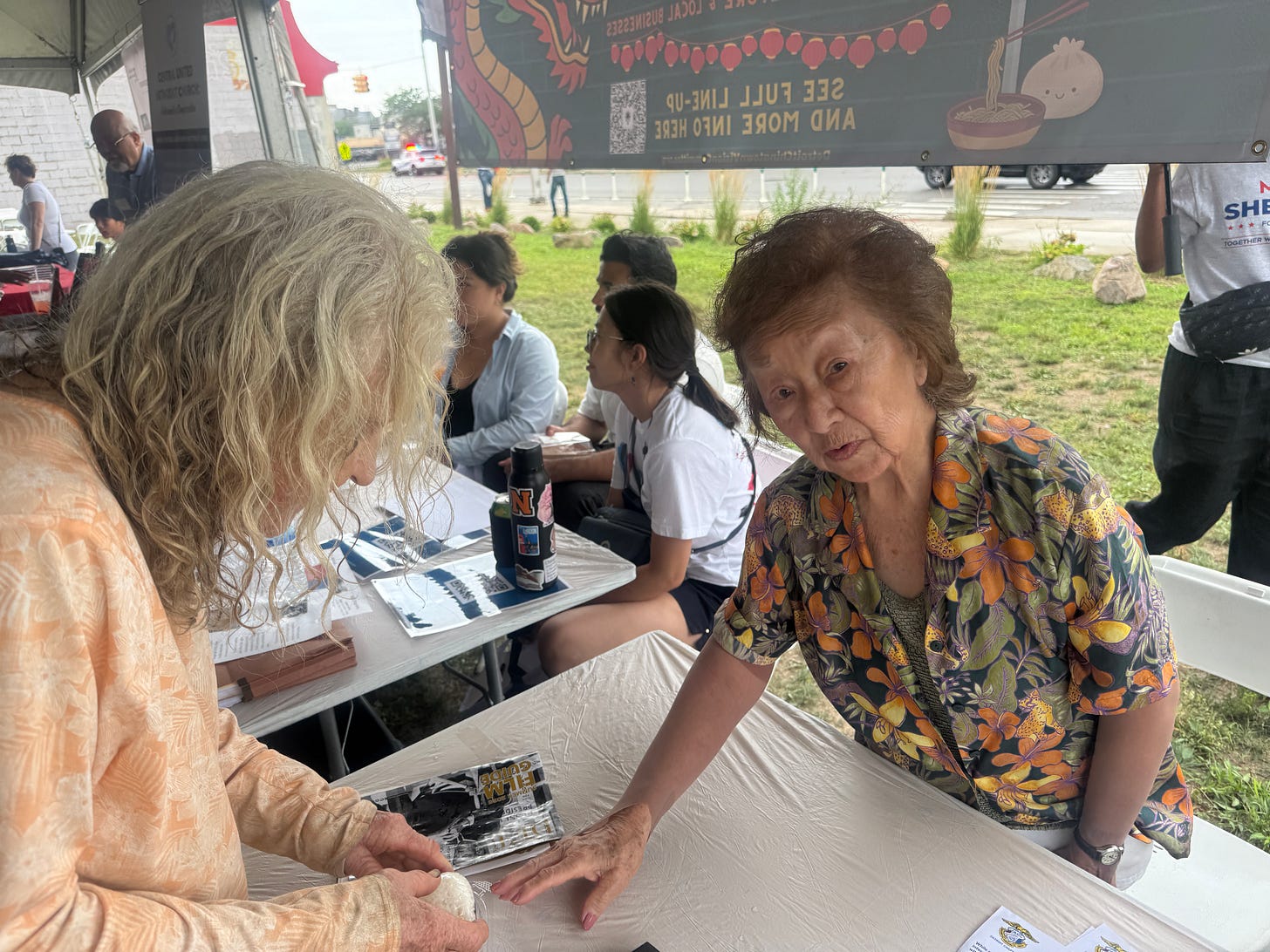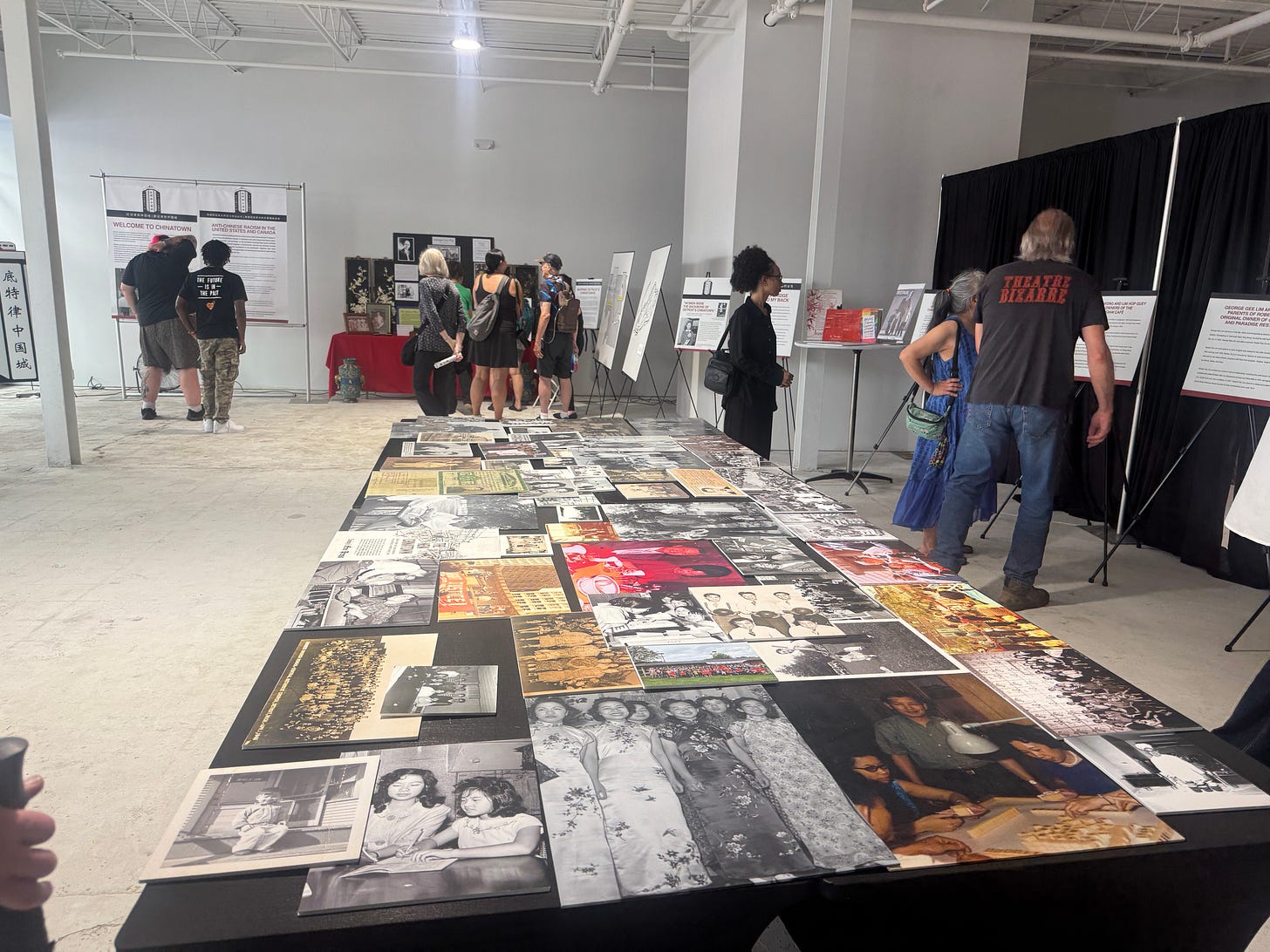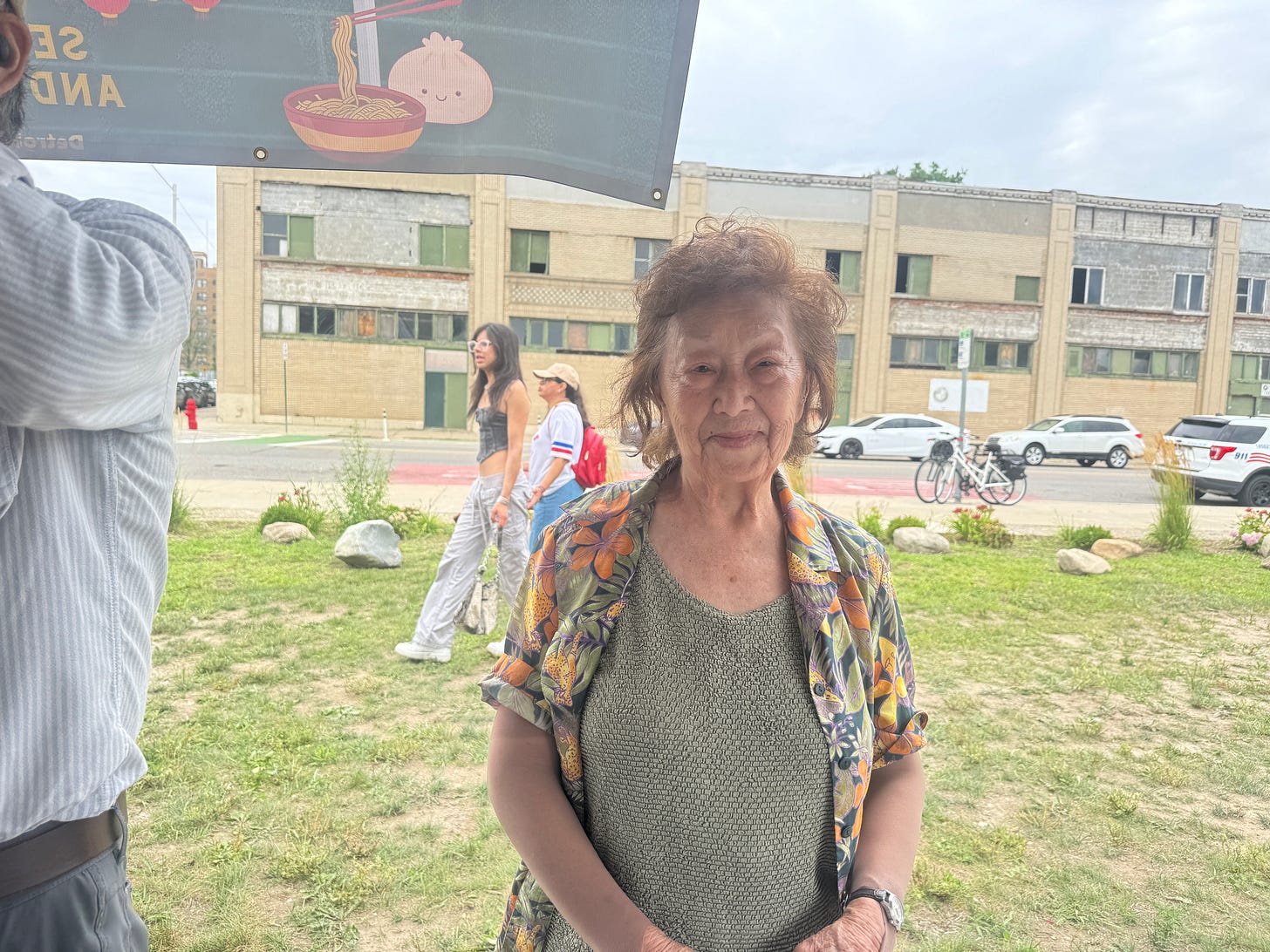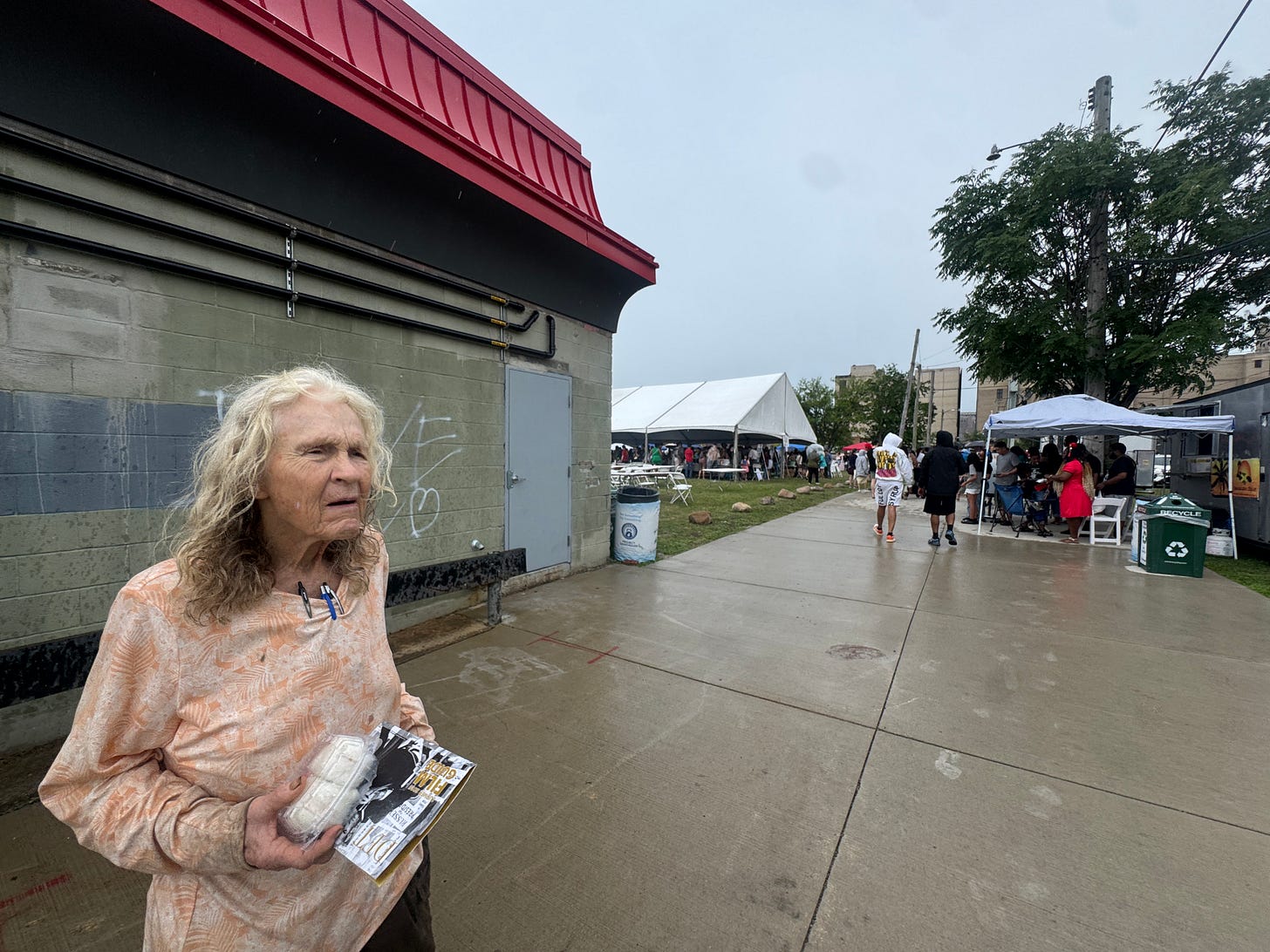What I learned meeting a Japanese American internment camp survivor
Introducing longtime Cass Corridor resident Cindy Darrah to Mary Kamido, a 95-year-old survivor of America's internment camps for Japanese Americans, was one of the coolest things I've ever done.

I met a woman who became a teenager inside an California internment camp at the inaugural Chinatown Block Party celebrating Detroit’s Asian-American history.
Mary Kamido, born in 1929 in California, has spent most of her life in Southeast Michigan, where she worked at Ford Motor Company and was the Treasurer for the Japanese American Citizens League in Detroit.
Kamido was a child when the United States government came to take her and her family to the facility, and were instructed to only take what they could carry.
“I was 11, so I wanted to take my dolls,” she said.
I asked Kamido what she could remember from the three years she spent at the internment camp, where Japanese American families were ordered to live in an effort to combat potential espionage. The war broke out in 1942 and Kamido and her family were among the 120,000 Japanese Americans sent to concentration camps, officially referred to by the U.S. government as “relocation centers.”
“What do I remember? I remember everything,” Kamido said. “Stuff like that doesn’t go away — I could still paint a picture in my mind from the day I got there.”
“What was going on in there?” I asked.
“Nothing that anyone could pull over on me,” Kamido replied.
Her family were not spies, she says. Kamido was born and raised in Stockton, CA.
Even as an 11-year-old she knew what was happening was immoral. It wasn’t easy surviving in the camp, she said. Kamido and her family were forced to sleep on army cots, use communal washrooms and eat army food for three years.
It’s hard to understand how these camps were legal.
The U.S. Supreme Court upheld the constitutionality of Japanese American removals under the Due Process Clause of the Fifth Amendment to the United States Constitution in its 1944 decision Korematsu v. United States.
On December 18, 1944, the Court ruled unanimously that the U.S. government could not continue to detain a citizen who was “concededly loyal to the United States. The ruling led to the release of Japanese Americans from camps across the country throughout the next year.
Kamido says she never understood it either. She mentioned the racism she faced working at Ford Motor Company from union members who blamed her and her family for the changing industry.
Immediately after I shook hands with Kamido and began walking back to my car, I ran into Cindy Darrah, a longtime local activist who lives on Peterboro and Second right next to the Detroit Shipping Co. restaurant.
Darrah is currently fighting to stay in her home she’s owned for decades. She’s been there since Chinese residents owned businesses in Cass Corridor, which was once a hotspot for drug deals and sex work.
She remembers when her block was a vibrant community with 10,000 residents.
The area, which is getting a $1 million streetscape improvement from a state grant provided to nonprofit Midtown Inc., has gotten nicer since the pandemic.
Apartments on Peterboro and Charlotte that were once $900 are now $2,600. And what was once an area where cheap housing was gobbled up by students and creatives has become one where faux-luxury apartments are sold to transplants with Michigan Medicine t-shirts accompanied by their parents to tour prospective apartments.
Not to mention the $3.5 million Chung’s renovation, where developer Mike Essian continues his search for three Asian restaurants to put inside the new building.

The attention on that section of Cass Corridor, spurred by the demolition of the old On Leong, Chinese Merchants Association building in 2022, is exciting, Darrah says.
She hopes she’ll be around to see it.
“They’re trying to get rid of me,” she said.
At a recent Detroit City Council meeting, Gabriela Santiago-Romero, who represents Cass Corridor in District 6, told a public commenter inquiring about Darrah that her office is doing everything possible to keep her in the home.
It needs a ton of work, but it seems like some cosmetic improvements have happened.
There’s no more fence that separates the folks that used to live in the Jefferies Housing Projects on the other side of the freeway who sit outside of Darrah’s house playing cards or selling weed. (Drive past Second Avenue and Peterboro Street across from the Grocer Farm store if you don’t know what I’m talking about.) There also doesn’t seem to be as many stray cats meandering in her front yard.
I told Darrah about my interaction with Kamido, and encouraged her to walk over to the tent where Kamido was mingling with attendees of the block party.
“We’ve got the guest of honor,” I joked as I walked past the stage where Francis Grunow of the Chinatown Vision Committee was standing. Perhaps he and I were the only ones who understood the significance of her presence at the event.
“Thanks for coming, Cindy!” Grunow said.
She either didn’t hear him or chose to save her energy instead of responding.
Darrah smiled when she introduced herself to Kamido, saying she had never met anyone who lived in an American concentration camp. Darrah told her that she used to Atlanta to participate in anti-nuclear protests in the 1980s, which focused on the widespread destruction and longterm suffering Japanese people endured after America attacked Japan with a nuke during WWII.
“Oh, thank you,” Kamido told her.
They spoke for a bit — I couldn’t make out most of their conversation, but did hear Kamido say she was surprised to hear Cass Corridor was seeing investment.
“If I were to tell my uncle that I was going to Cass and Canfield, he would’ve looked at me like I was crazy,” Kamido said.
I shook hands with Kamido after the conversation and walked Darrah back to her house.
For more insight into what life was like for Japanese Americans living in internment camps, watch Mary Kamido in this hour-long interview with the Ann Arbor Library:



